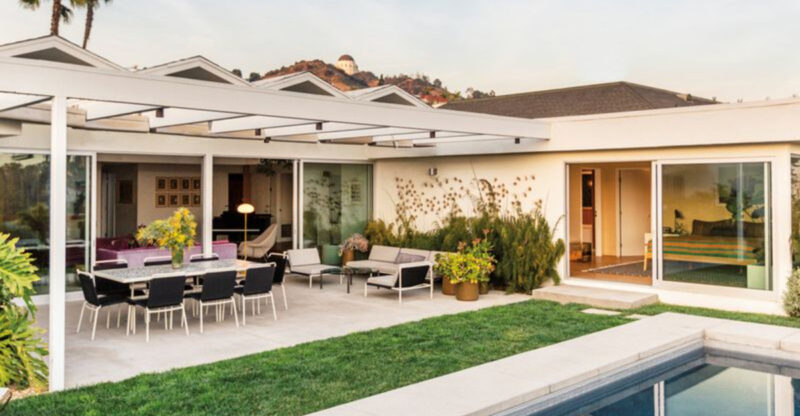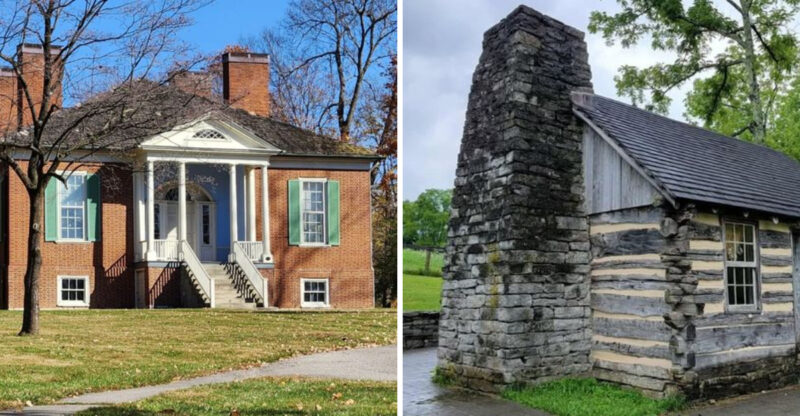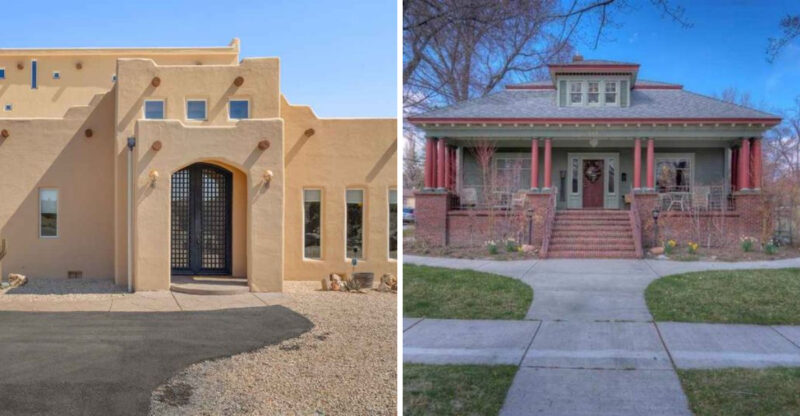10 Popular Outdoor Spaces You’ll Notice In New York Residential Areas
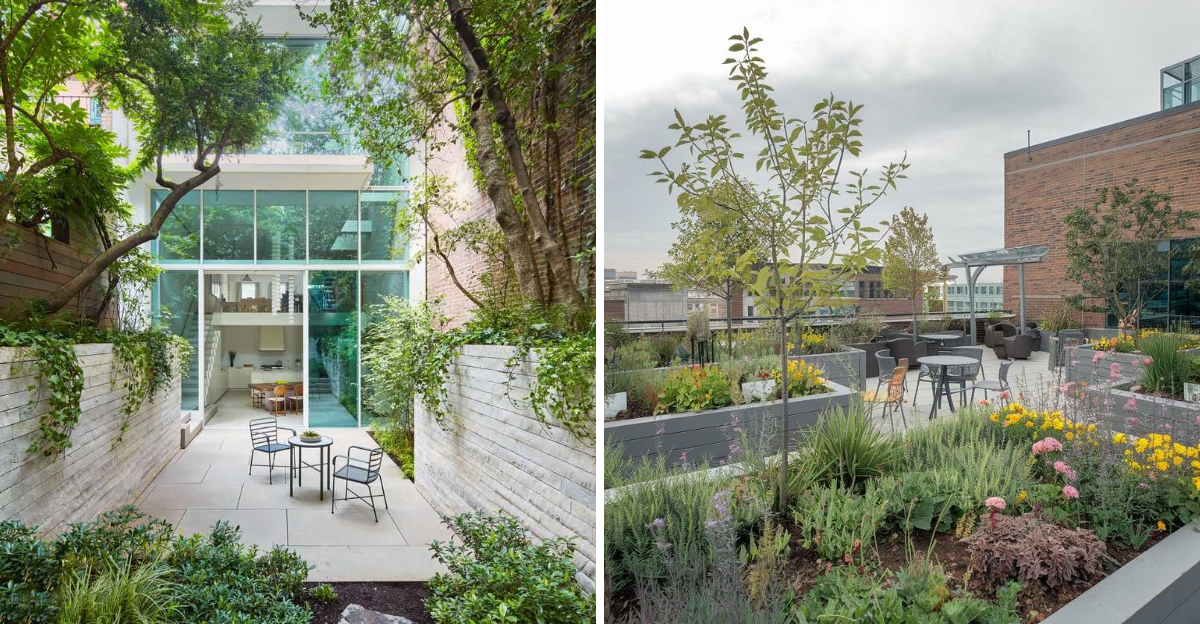
New York City, a bustling metropolis, is home to a diverse array of outdoor spaces that offer respite from the concrete jungle. From lush gardens to sprawling parks, the city boasts a wealth of options for those seeking fresh air and greenery.
Here, we present the 10 popular outdoor spaces in New York’s residential areas that you simply cannot miss.
1. Brownstone Stoops And Front Gardens

Those iconic steps leading to brownstone entrances aren’t just architectural features. They’re social hubs where neighbors chat while surrounded by potted plants and window boxes.
Many homeowners transform these small front areas into mini botanical showcases. The tradition dates back to the 19th century when these raised entrances served practical purposes, keeping homes above street level.
Today, they’re prime people-watching spots during summer evenings. Some brownstone owners install decorative railings, seasonal flags, or unique planters to personalize their stoops.
2. Pocket Parks Between Buildings

Tucked between towering structures, these tiny green oases offer surprising tranquility. Often created through community initiatives or developer requirements, pocket parks maximize minimal square footage with clever landscaping and seating.
Locals treat these spaces as outdoor living rooms, bringing books, lunches, and laptops to enjoy fresh air without traveling far. Some feature public art installations or small water features that mask urban noise.
The best pocket parks incorporate native plants that thrive in challenging city conditions. All while supporting urban wildlife like butterflies and birds.
3. Rooftop Gardens And Lounges
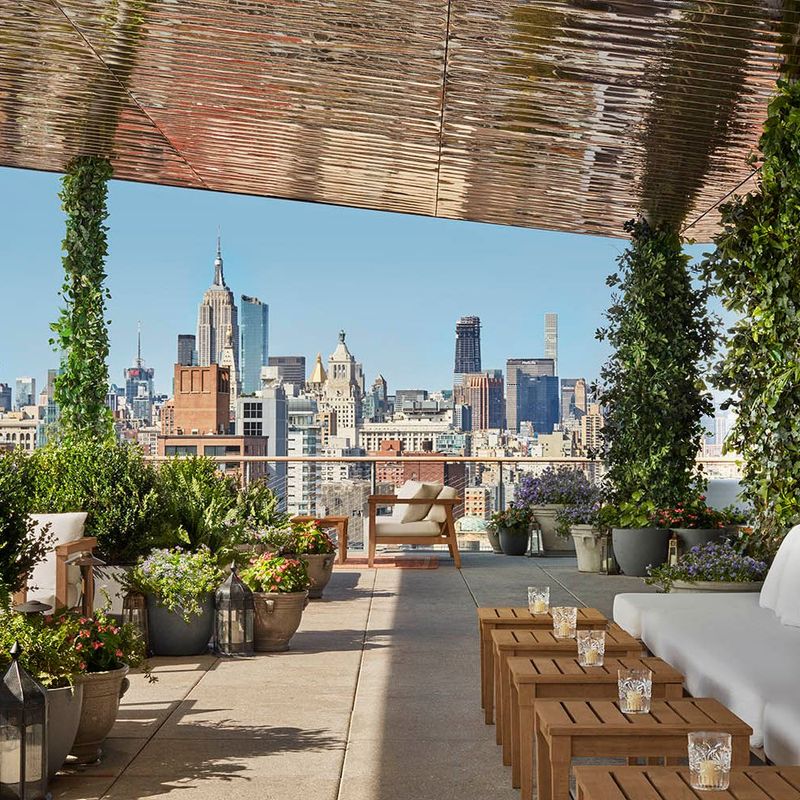
The skyline views alone make these elevated retreats special, but modern buildings take rooftop amenities to new heights. Developers transform previously unused space into green sanctuaries with container gardens, lounging areas, and sometimes even swimming pools.
Building residents escape to these spaces for sunbathing, outdoor dining, or stargazing parties. Many rooftops feature sustainable elements like rainwater collection systems and solar panels alongside recreational areas.
Apartment hunters increasingly list rooftop access as a must-have feature. They are willing to sacrifice indoor square footage for these shared outdoor living rooms above the city.
4. Community Gardens
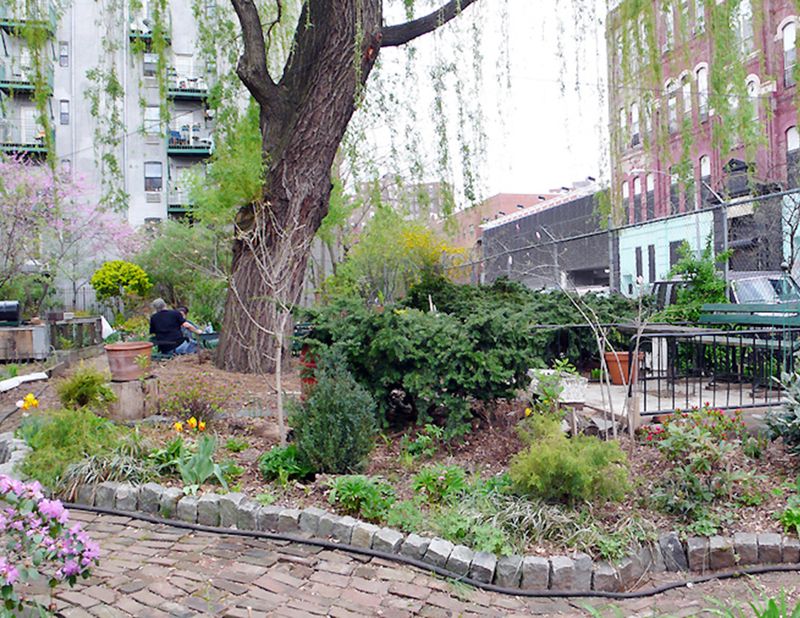
What began as grassroots efforts to reclaim vacant lots now flourishes as vibrant community hubs throughout the five boroughs. Neighbors share responsibilities for growing vegetables, flowers, and herbs in these democratic green spaces.
Many gardens host workshops, cultural events, and harvest celebrations that strengthen community bonds. The waiting lists for garden plots demonstrate their popularity, with some residents waiting years for their chance to dig in the soil.
Beyond producing fresh food, these gardens serve as outdoor classrooms. Children learn about ecology and adults exchange gardening tips across cultural and generational lines.
5. Courtyard Apartment Complexes

Stepping through archways into these hidden communal spaces feels like discovering a secret garden. Popular in pre-war buildings, these courtyards create micro-communities where residents gather while being sheltered from street noise.
The architectural design naturally encourages interaction as apartments face inward toward shared green space. Children play safely while parents chat on benches, creating multi-generational social bonds that are increasingly rare in urban settings.
Well-maintained courtyards often feature fountains, sculpture, or heritage trees that have grown alongside generations of residents. Living landmarks within their neighborhoods.
6. Waterfront Promenades

Manhattan’s edge has transformed dramatically, with former industrial zones now featuring landscaped walkways where residents jog, stroll, and soak in river views. These linear parks have become essential amenities for nearby apartment buildings, effectively extending living space.
Developers highlight proximity to waterfront access in their marketing materials, knowing these public spaces significantly boost property values. Morning tai chi groups, evening sunset-watchers, and weekend picnickers create a constant but peaceful flow of activity.
Recent waterfront developments incorporate flood-resistant design elements. Acknowledging climate challenges while creating beautiful recreational spaces that reconnect New Yorkers with their island geography.
7. Private Backyard Gardens

Among New York’s most coveted real estate features, these rare urban sanctuaries allow lucky homeowners to create personal green retreats. Found primarily in brownstones, townhouses and ground-floor apartments, private gardens range from meticulously designed landscapes to charming cottage-style plots.
Summer dinner parties under string lights transform these spaces into magical outdoor dining rooms. Garden owners face unique challenges, navigating limited sunlight between buildings and restricted water access.
Savvy gardeners choose shade-tolerant plants and vertical growing systems to maximize productivity in compact spaces. It proves that you don’t need acres to create a meaningful connection with nature.
8. Dog Runs And Pet-Friendly Spaces

Four-legged New Yorkers need outdoor time too, making dedicated pet areas essential in residential planning. Both public and private dog runs provide safe, enclosed spaces where urban pups can exercise off-leash while their humans socialize.
Luxury buildings increasingly include pet spas, agility courses, and even dog-friendly swimming areas as amenities. Spaces foster tight-knit communities as regular visitors form friendships through their shared love of animals.
Thoughtfully designed runs feature special surfaces that drain well, seating for owners, and shade structures. It makes these spaces comfortable year-round for both species using them.
9. Children’s Playgrounds
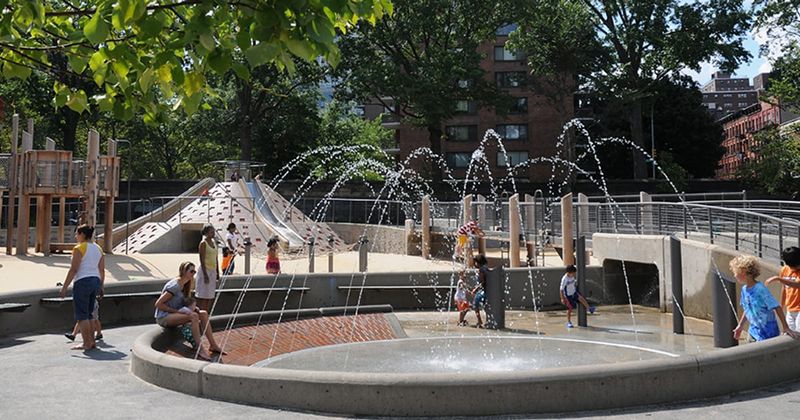
Modern housing developments recognize that families need safe outdoor play spaces steps from home. These aren’t just standard swing sets – today’s residential playgrounds feature imaginative designs and multi-generational appeal.
Developers consult with child development experts to create play environments that encourage physical activity and social interaction. Many incorporate water features for summer cooling, climbing structures for motor skill development, and seating areas where caregivers can comfortably supervise.
The presence of well-maintained playgrounds often indicates family-friendly buildings. This is where neighbors form supportive communities through their children’s shared activities.
10. Green Roofs And Vertical Gardens

The newest trend in urban residential design takes greenery skyward, with living walls and planted rooftops becoming common features. Beyond their Instagram appeal, these systems provide significant environmental benefits – reducing building temperatures, managing stormwater, and improving air quality.
Residents appreciate how these installations soften harsh urban views while creating habitats for birds and beneficial insects. Forward-thinking buildings integrate these green technologies with usable amenity spaces, creating rooftop farms where residents grow vegetables or herb gardens adjacent to outdoor kitchens.
As climate concerns grow, expect to see more residential buildings incorporating these sustainable features. It transforms formerly unused surfaces into productive ecosystems.

